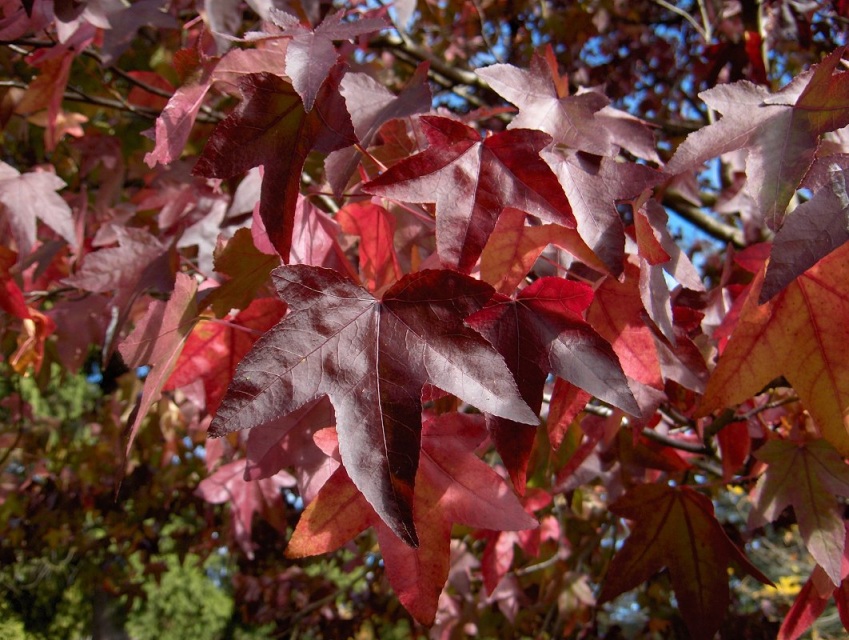- Home
- >
- Broadleaved Tree Seeds J-Z by Latin Name
- >
- Liquidambar (liquidambar styraciflua)
Liquidambar (liquidambar styraciflua)
SKU:
£1.15
1.15
17.5
£1.15 - £17.50
Unavailable
per item
Seed Prices
0.5 gram (approx 95 seeds) £1.15
1 gram (approx 191 seeds) £1.75
2 grams (approx 382 seeds) £2.45
5 grams (approx 955 seeds) £4.75
10 grams (approx 1910 seeds) £8.00
25 grams (approx 3820 seeds) £17.50
Use the drop down button to select the seed quantity
Germination, Sowing and After Care Information for
Liquidambar, Sweet Gum (liquidambar styraciflua)
Liquidambar seeds have a moderate dormancy within them, this requires a degree of patience to overcome. To enable this to be broken down please use the following information as a guide.
First prepare a free draining substrate into which the seeds are to be mixed, this can be a 50/50 mixture of compost and sharp sand, or perlite, vermiculite or even just pure sharp sand has worked well for me. The chosen substrate needs to be moist (but not wet), if you can squeeze water out of it with your hand it is too wet and your seeds may drown and die.
Mix the seeds into the substrate, making sure that their is enough volume of material to keep the seeds separated. Place the seed mixture into a clear plastic bag (freezer bags, especially zip-lock bags are very useful for this -provided a little gap is left in the seal for air exchange) If it is not a zip-lock type bag it needs to be loosely tied. Then write the date on the bag so that you know when the pretreatment was started.
The seeds require a cold period to break the dormancy that is naturally found within them, this is easily achieved by placing the prepared bag of seeds and compost mix in the fridge (4 Celsius or 39F) for between 4 and 12 weeks. It is difficult to be more specific because different seed-lots have widely differing levels of dormancy. It is quite possible for the seeds to germinate in the bag at these temperatures when they are ready to do so, if they do, just remove them from the bag and carefully plant them up.
When around 10% of the seeds are showing signs of germination the whole seed-lot is ready to be sown. Small seed quantities can be sown in pots or seed-trays and transplanted as necessary when the seedlings are large enough to handle. For larger quantities it is easiest to sow the seeds in a well prepared seedbed
It has also been found that fluctuating pretreatment temperatures can give the best germination results and I have myself had excellent results by keeping the mixed seeds in a cold shed through the winter for the cold stage of their pretreatment and allowing the temperature to fluctuate naturally.
Do not expose newly sown seeds to high temperatures (above 25 Celsius) otherwise a secondary dormancy may be induced and the seeds will not germinate until they have been pretreated again. Germinated seeds can be planted in pots or plug trays in a good quality compost. Keep the seedlings well watered and weed free. Growth in the first year is usually between 15 and 40cm and usually trouble free. Allow them to grow for 2 or 3 years before planting them in a permanent position.
First prepare a free draining substrate into which the seeds are to be mixed, this can be a 50/50 mixture of compost and sharp sand, or perlite, vermiculite or even just pure sharp sand has worked well for me. The chosen substrate needs to be moist (but not wet), if you can squeeze water out of it with your hand it is too wet and your seeds may drown and die.
Mix the seeds into the substrate, making sure that their is enough volume of material to keep the seeds separated. Place the seed mixture into a clear plastic bag (freezer bags, especially zip-lock bags are very useful for this -provided a little gap is left in the seal for air exchange) If it is not a zip-lock type bag it needs to be loosely tied. Then write the date on the bag so that you know when the pretreatment was started.
The seeds require a cold period to break the dormancy that is naturally found within them, this is easily achieved by placing the prepared bag of seeds and compost mix in the fridge (4 Celsius or 39F) for between 4 and 12 weeks. It is difficult to be more specific because different seed-lots have widely differing levels of dormancy. It is quite possible for the seeds to germinate in the bag at these temperatures when they are ready to do so, if they do, just remove them from the bag and carefully plant them up.
When around 10% of the seeds are showing signs of germination the whole seed-lot is ready to be sown. Small seed quantities can be sown in pots or seed-trays and transplanted as necessary when the seedlings are large enough to handle. For larger quantities it is easiest to sow the seeds in a well prepared seedbed
It has also been found that fluctuating pretreatment temperatures can give the best germination results and I have myself had excellent results by keeping the mixed seeds in a cold shed through the winter for the cold stage of their pretreatment and allowing the temperature to fluctuate naturally.
Do not expose newly sown seeds to high temperatures (above 25 Celsius) otherwise a secondary dormancy may be induced and the seeds will not germinate until they have been pretreated again. Germinated seeds can be planted in pots or plug trays in a good quality compost. Keep the seedlings well watered and weed free. Growth in the first year is usually between 15 and 40cm and usually trouble free. Allow them to grow for 2 or 3 years before planting them in a permanent position.



